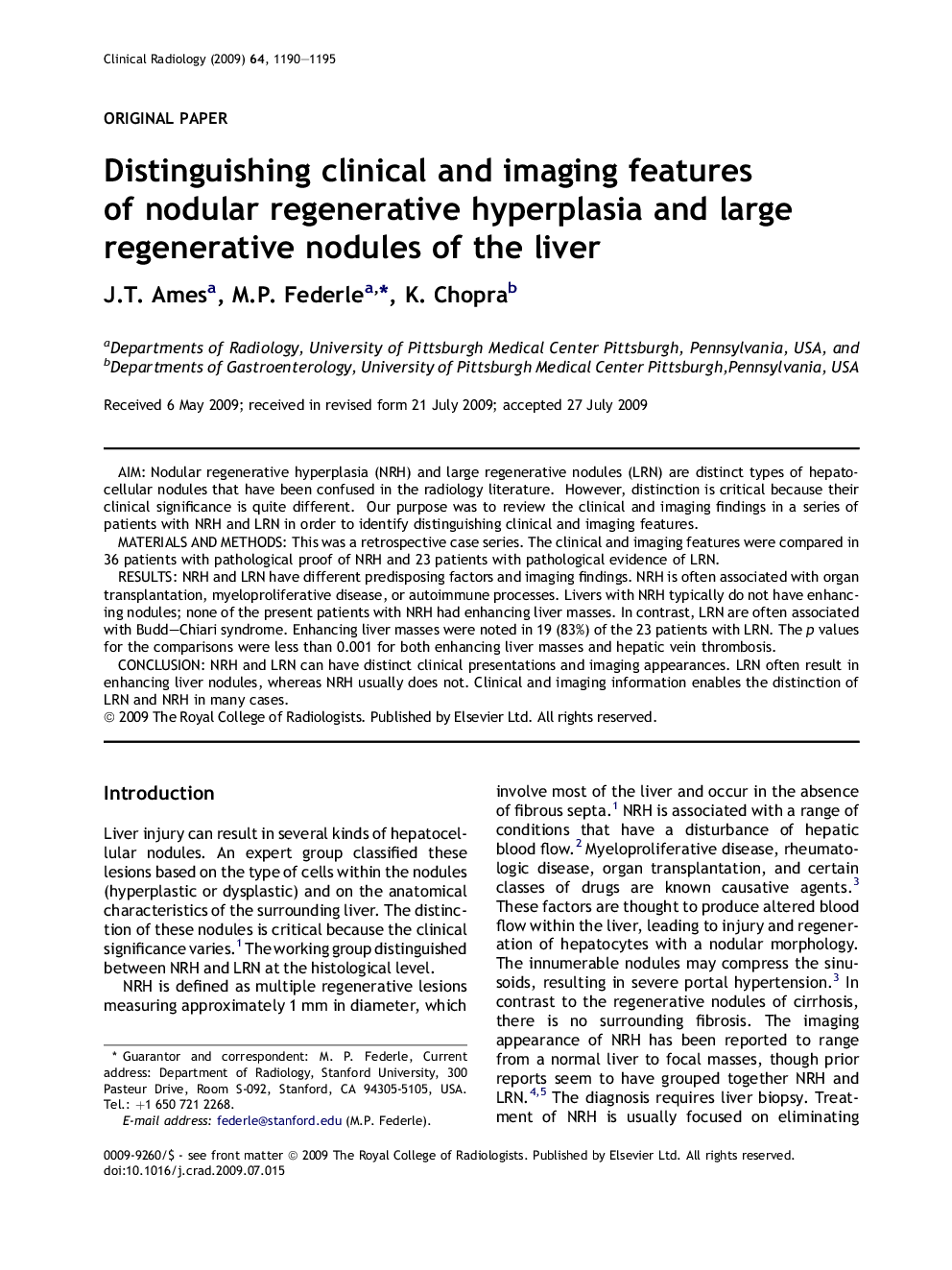| Article ID | Journal | Published Year | Pages | File Type |
|---|---|---|---|---|
| 3983881 | Clinical Radiology | 2009 | 6 Pages |
AimNodular regenerative hyperplasia (NRH) and large regenerative nodules (LRN) are distinct types of hepatocellular nodules that have been confused in the radiology literature. However, distinction is critical because their clinical significance is quite different. Our purpose was to review the clinical and imaging findings in a series of patients with NRH and LRN in order to identify distinguishing clinical and imaging features.Materials and methodsThis was a retrospective case series. The clinical and imaging features were compared in 36 patients with pathological proof of NRH and 23 patients with pathological evidence of LRN.ResultsNRH and LRN have different predisposing factors and imaging findings. NRH is often associated with organ transplantation, myeloproliferative disease, or autoimmune processes. Livers with NRH typically do not have enhancing nodules; none of the present patients with NRH had enhancing liver masses. In contrast, LRN are often associated with Budd–Chiari syndrome. Enhancing liver masses were noted in 19 (83%) of the 23 patients with LRN. The p values for the comparisons were less than 0.001 for both enhancing liver masses and hepatic vein thrombosis.ConclusionNRH and LRN can have distinct clinical presentations and imaging appearances. LRN often result in enhancing liver nodules, whereas NRH usually does not. Clinical and imaging information enables the distinction of LRN and NRH in many cases.
